
A porch can expand your living space and add curb appeal. Find out what to budget for the cost of a porch on your home with this guide.
Make an outdoor space worth spending your days in


A pergola contractor can help balance design, material, and budget, ensuring the structure fits both your style and home.
Wood is often the most affordable material, while steel, fiberglass, and louvered systems are generally more expensive.
Freestanding pergolas usually cost more than attached alternatives because they require extra support and anchoring materials.
Intricate styles, like arched, awning, and louvered pergolas, involve more complicated installation and almost always require a professional.
Freestanding pergolas offer flexible placement but less shade, while attached styles blend easily with patios and decks.
When it comes to enhancing your outdoor space and creating a beautiful, functional oasis, pergolas are an excellent addition. There are many types of pergolas to choose from, and these versatile structures not only provide shade and shelter but also add style to your backyard. If you're looking for pergola ideas for your outdoor space, you’ll want to understand the different types available and which will work best for your purposes. Let’s explore the world of pergolas, from different types to construction materials and features.
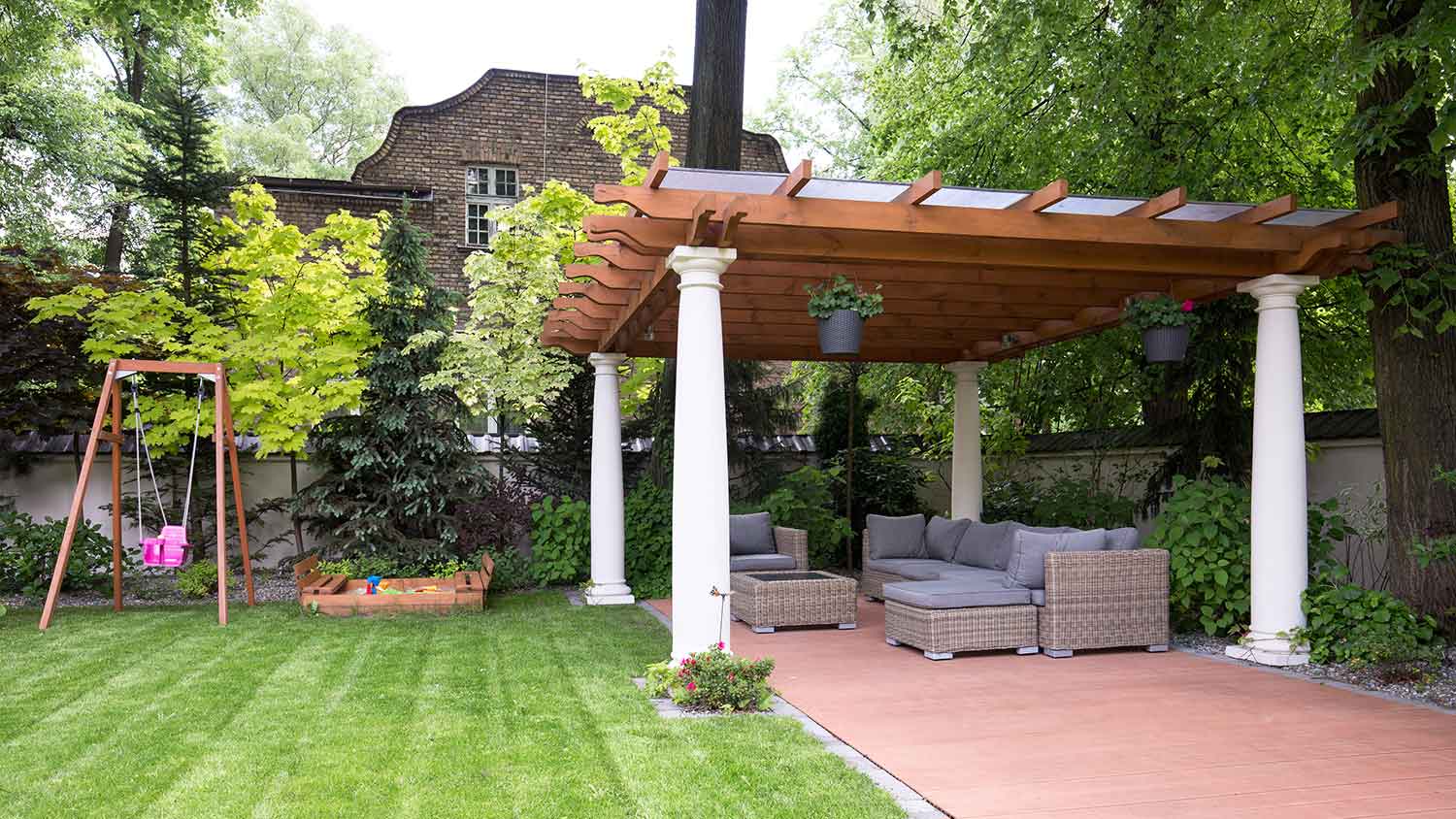
A freestanding pergola is a standalone structure that’s not attached to any other building and provides a living space separate from the house. This is one of the most popular types of pergolas since placement and design are so customizable.
However, a freestanding pergola often provides less shade since it’s away from the home structure. These designs are more expensive, as well, since you’ll need more beams and anchoring materials.
| Pros | Cons |
|---|---|
| Flexible placement | Less shade |
| Flexible design | More expensive |
| Separate from house | Additional anchoring |
Best for: Spacious outdoor areas
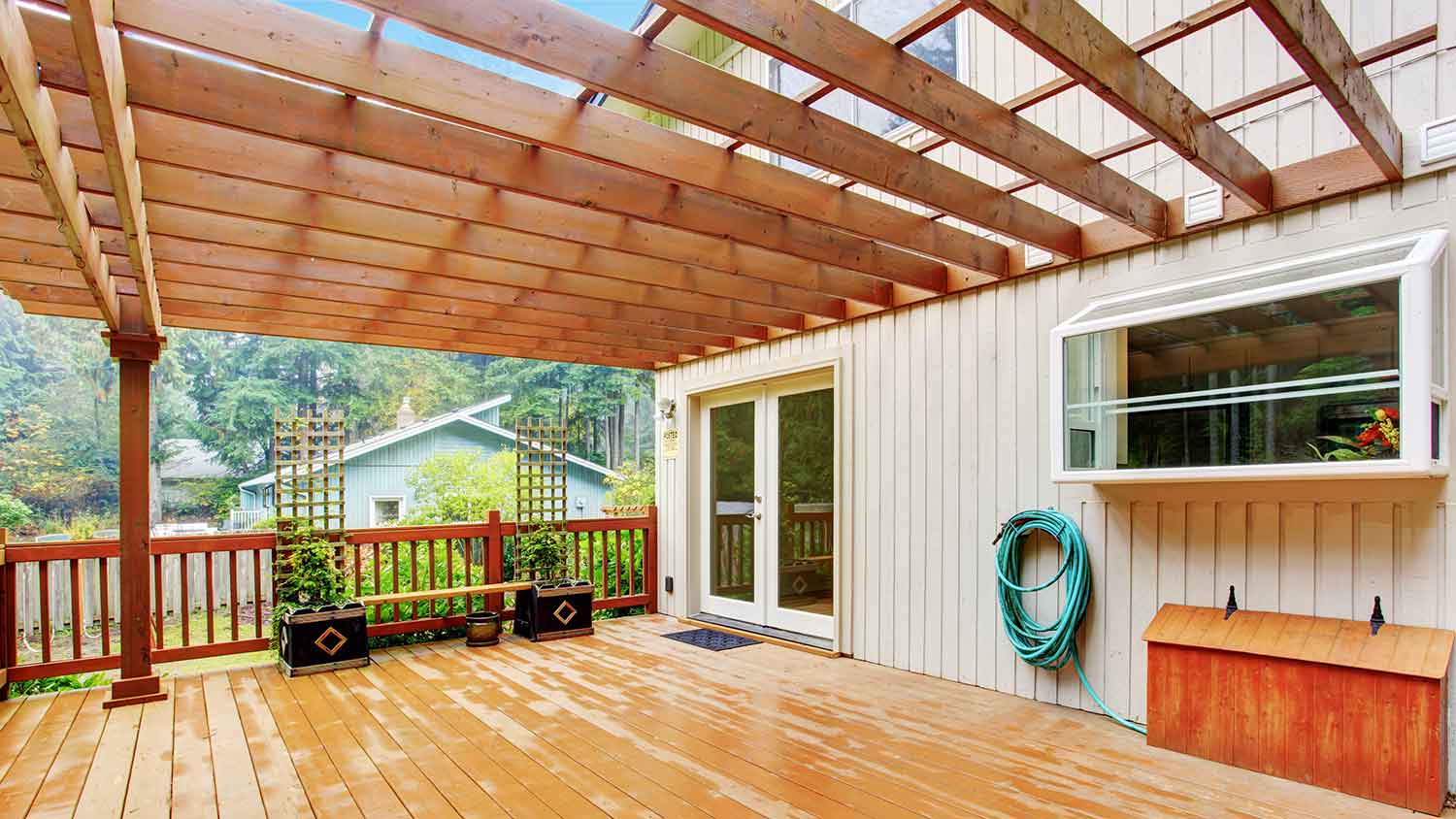
An attached pergola is connected to an existing structure, such as the side of your house or a garage. It shares one side with the building, providing support and stability. A pergola that’s attached to the home can also provide seamless integration with your home's architecture and convenient access from the home to the pergola.
While this design is more affordable than freestanding styles, an attached pergola is also limited in terms of placement and design. With attached pergolas, you’ll want to opt for professional installation by a pergola pro to ensure they’re safely connected to the existing structure.
| Pros | Cons |
|---|---|
| Fewer support beams | Limited design |
| Convenient access | Limited placement |
| More affordable | Pro install needed |
Best for: Covering patios and decks for outdoor entertaining
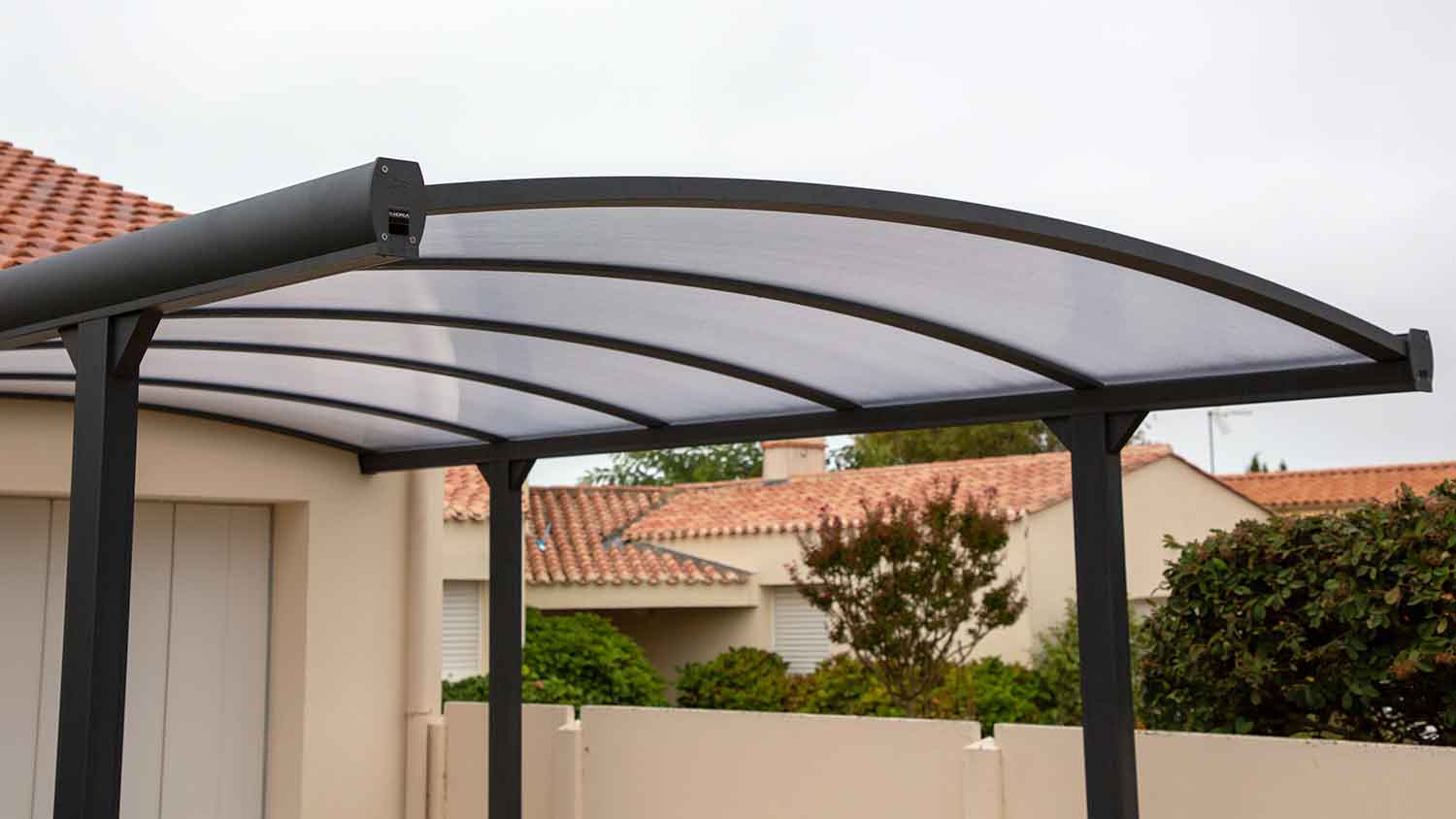
An arched pergola features an elegant curved roof design that adds sophistication to your outdoor space. This type of pergola often incorporates intricate details and decorative elements like climbing plants and unique lighting concepts.
While this structure creates a visually striking focal point in your backyard and offers a unique and aesthetically pleasing design, installation may be more complicated. The complex design means a more expensive installation than other types of pergolas, and you’ll have fewer customization options.
| Pros | Cons |
|---|---|
| Elegant focal point | Expensive design |
| Unique design | Complex installation |
| Can hold climbing plants | Less customizable |
Best for: Those who want to make a design statement

Installing an awning pergola combines the benefits of a traditional pergola with the versatility of a retractable awning. It attaches to an existing structure but requires no support beams. This design allows you to maximize space in your outdoor area. Plus, you can control the amount of shade and sunlight you get.
While installing an awning pergola requires fewer materials than other pergola types, installation can be complex and costly, especially if you choose a motorized model. Motorization also means more regular maintenance and upkeep.
| Pros | Cons |
|---|---|
| Adjustable shade | Regular maintenance needed |
| Less space taken | Complex installation |
| Fewer materials needed | Motorization can be costly |
Best for: Small patios, doorway stoops, or house-adjacent walkways
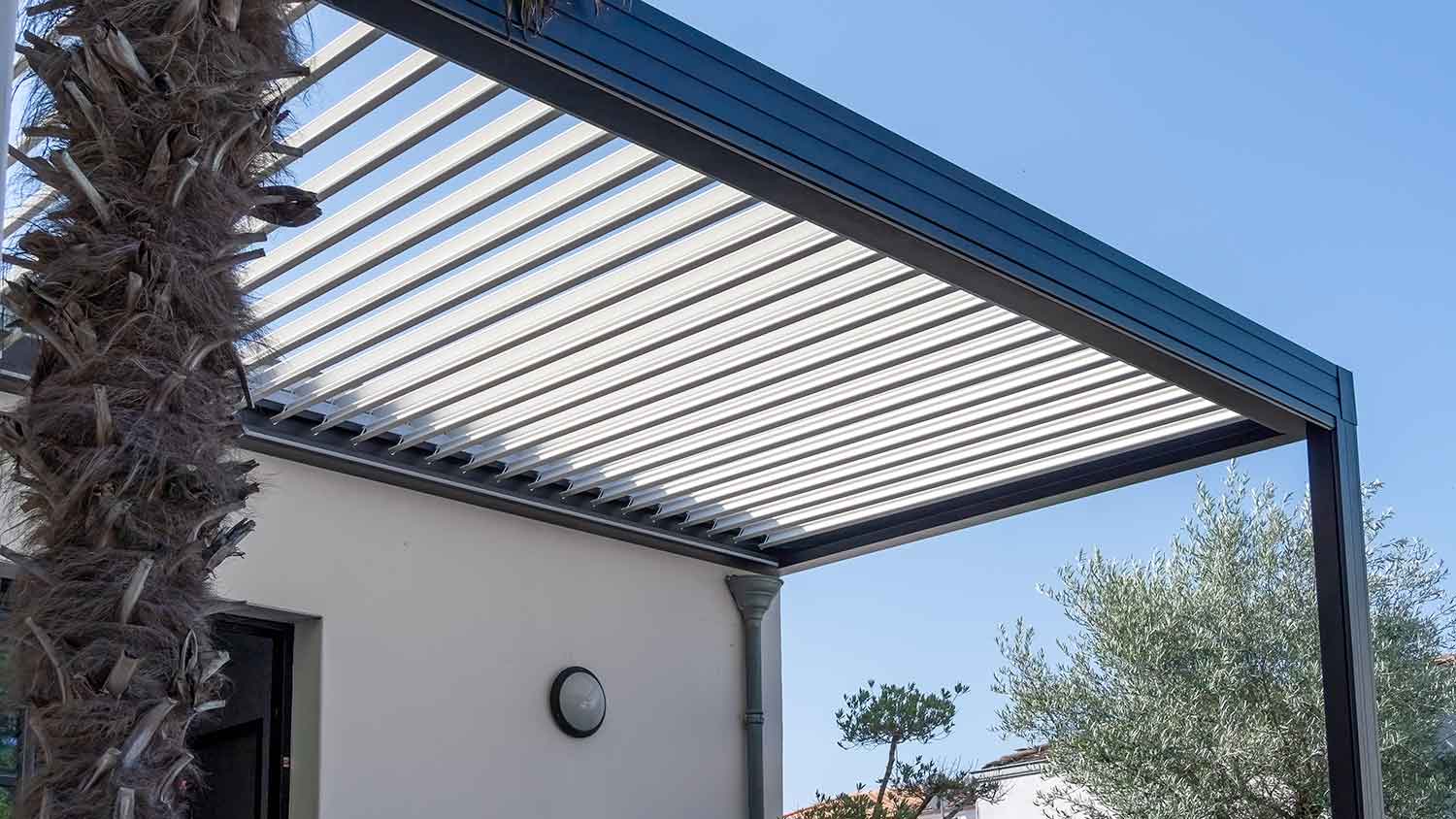
A louvered pergola features adjustable slats or louvers on the roof, allowing you to control how much sunlight and air you get in your outdoor space. This innovative design allows for smart pergola features and customizable comfort, adding a modern and stylish touch.
Louvered pergolas do, however, tend to be more expensive due to the mechanical aspects. This means you'll have to spend more time on regular maintenance to keep the motorized parts in good working condition. Installation for these pergolas is also more complex and requires the help of a professional.
| Pros | Cons |
|---|---|
| Sunlight control | More expensive |
| Ventilation control | Regular maintenance needed |
| Compatible with smart features | Complex installation |
Best for: Those who want a modern space with customizable comfort features
Aside from the style you choose, the material of your pergola can significantly impact its appearance, cost, and life span. Let's explore some common materials used in pergola construction.

Choosing a wood pergola offers the benefit of a natural and rustic appearance that blends seamlessly with outdoor surroundings. Wood also provides excellent structural strength. Additionally, wood tends to be more affordable than other materials, and it’s a better option for DIY pergola building.
Drawbacks include the need for regular maintenance since wood is susceptible to rot, insects, and weathering. It’s important to weigh the aesthetic appeal and lower cost against long-term maintenance requirements.
Vinyl is a low-maintenance material. It doesn't require painting or staining and is resistant to rot, insects, and weathering. It’s also lightweight and easy to install.
However, vinyl may have limited color options compared to wood, and it might not provide the same natural appearance. While it's cost-effective in the long run due to reduced maintenance needs, the initial investment of vinyl is slightly higher than wood.
An aluminum pergola is lightweight, resistant to rust and corrosion, and requires very little maintenance. It's an ideal choice for those seeking a durable and long-lasting structure.
However, aluminum's rigidity can limit design flexibility, and it may not exude the warmth of wood. While it's a practical option for those seeking a hassle-free pergola, the initial cost can be higher than vinyl, so it’s important to consider your budget and design preferences.
If you’re looking for exceptional strength and durability, steel is a long-lasting choice for outdoor structures. It can be customized for intricate pergola designs and is resistant to pests and harsh weather conditions.
On the flip side, steel is prone to rust without proper coating or maintenance, and its weight may require more substantial support structures. While a steel pergola is more expensive upfront than some alternatives, the durability and versatility of steel can make it a worthwhile investment for those seeking a robust and customized pergola.
Fiberglass pergolas are lightweight, easy to handle, and resistant to weathering, insects, and rot. They also offer a smooth, clean finish that can complement modern designs.
However, fiberglass may have limited availability compared to other materials, and it might not achieve the same natural appearance as wood. Additionally, the initial cost is often higher due to limited supply.
Concrete is another option when looking at pergola materials, and it provides excellent durability and strength, making it a long-lasting choice for outdoor structures. This strong material can be customized with various textures and finishes, adding a unique touch to your outdoor space.
However, concrete is heavy and may require substantial foundation work, which can increase installation costs. Design options are also limited compared to other materials. While it’s more expensive upfront, concrete’s structural integrity makes it a valuable choice for those seeking a robust and distinctive pergola.
You can enhance your pergola's functionality and comfort by incorporating various features that improve both the appearance and the comfort of your outdoor space. Here are a few common pergola features.
Consider adding outdoor heaters or ceiling fans to your pergola to create a comfortable environment year-round. Outdoor heaters provide warmth during colder months, while ceiling fans help circulate air on hot summer days.
For added privacy in your pergola, consider installing retractable privacy screens, curtains, or tall shrubs. These elements create a secluded and intimate space for relaxation and entertainment.
Protect your outdoor space from rain and harsh sunlight by adding different covers to your pergola. Options include retractable fabric sun shades, stylish tarps, and hard transparent covers that let in natural light while providing shelter from rain.
Illuminate your pergola with various lighting options, such as string lights, lanterns, or built-in LED fixtures. Proper lighting enhances the ambiance and extends your pergola's usability into the evening.
Whether you embark on a DIY installation or hire a local pergola installer depends on the type of pergola you choose as well as your skills, time, and budget. Installing your pergola yourself is more cost-effective since you’ll save on labor costs.
However, installing a pergola yourself requires a certain level of DIY knowledge and skills. Certain pergola types, like concrete, should never be DIYed. Plus, the pros can make sure that your dream pergola design really comes to life, which can be a challenge with DIY builds. If you want to ensure proper and safe construction while saving yourself some time and effort, go with a professional installation.
From average costs to expert advice, get all the answers you need to get your job done.

A porch can expand your living space and add curb appeal. Find out what to budget for the cost of a porch on your home with this guide.

A deck skirt can improve the form and function of a deck. Find out what it could cost to install deck skirting in your backyard with this guide.

Flagstone gives your outdoor space a gorgeous, rustic feel. Find out the cost of flagstone per square foot or per ton. Our expert cost guide helps you plan your budget for your flagstone project from walkways to patios to walls.

When designing a dream deck, knowing the pros and cons of composite decking vs. wood decking is helpful. We’ve broken down the differences to help you decide.
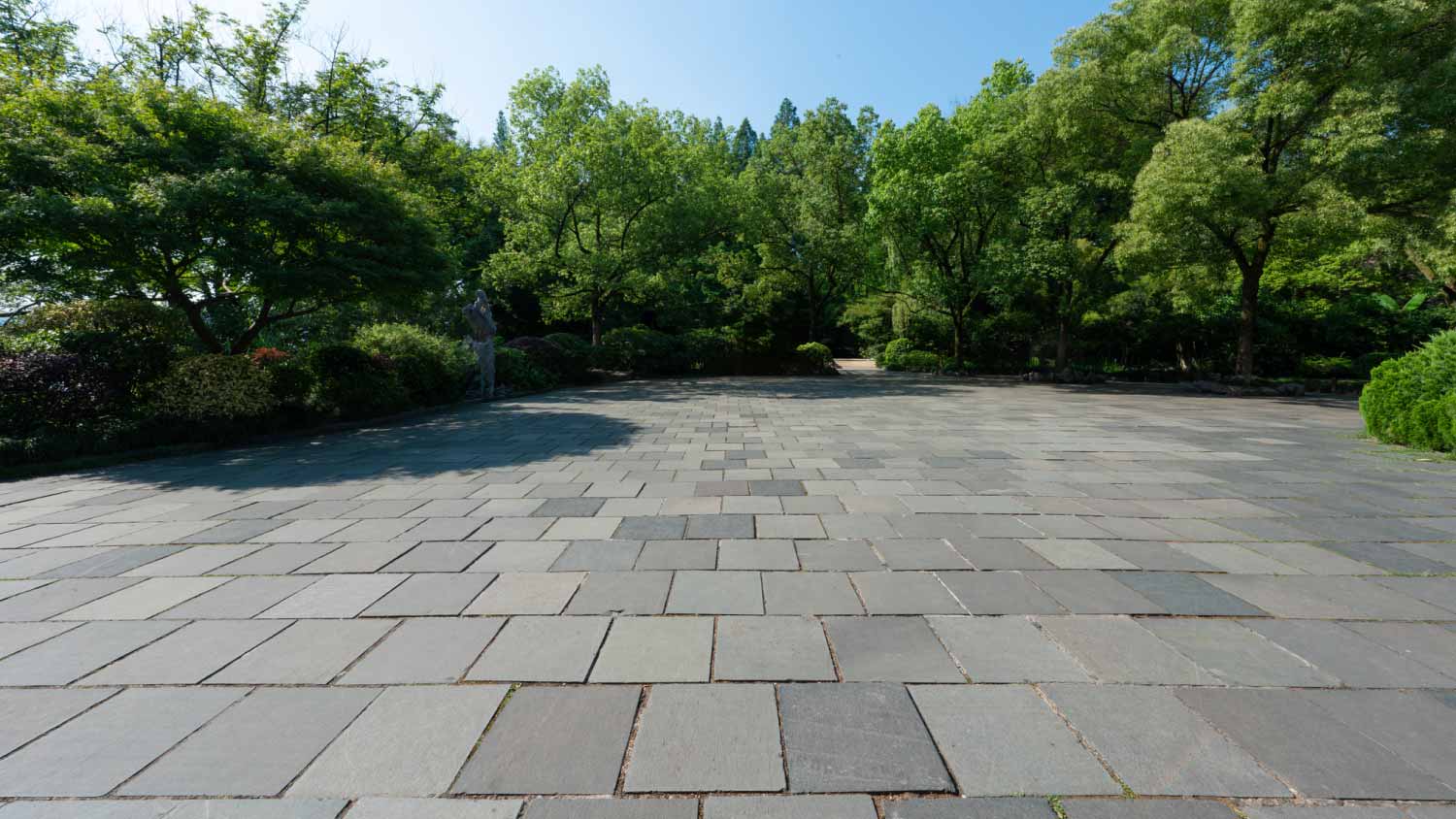
Bluestone patios can transform yards, increase home values, and extend your usable space. Learn about average bluestone patio costs to budget for the project.

Applying a paver sealer to your driveway or patio will give it new life. Read on for steps to help protect your hardscape from stains and damage.